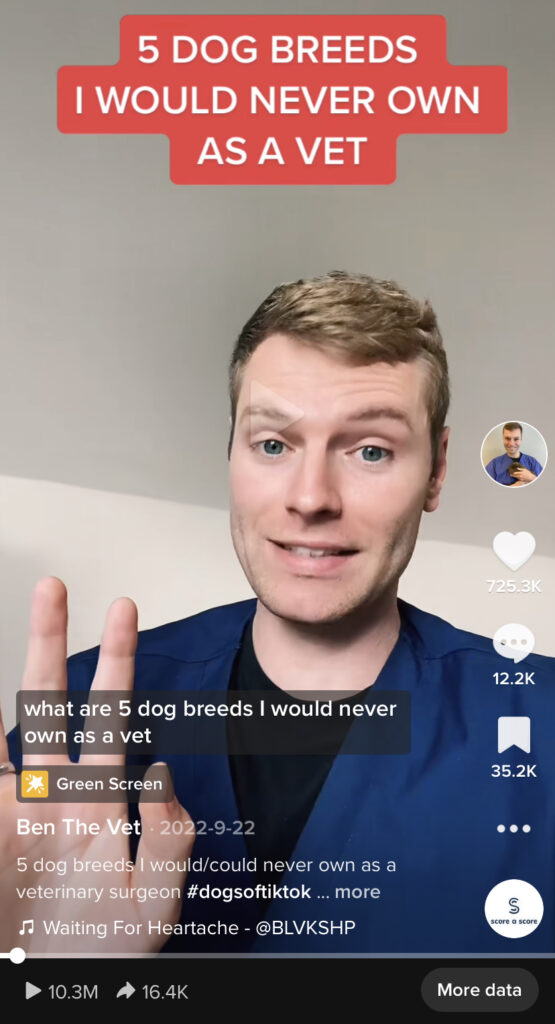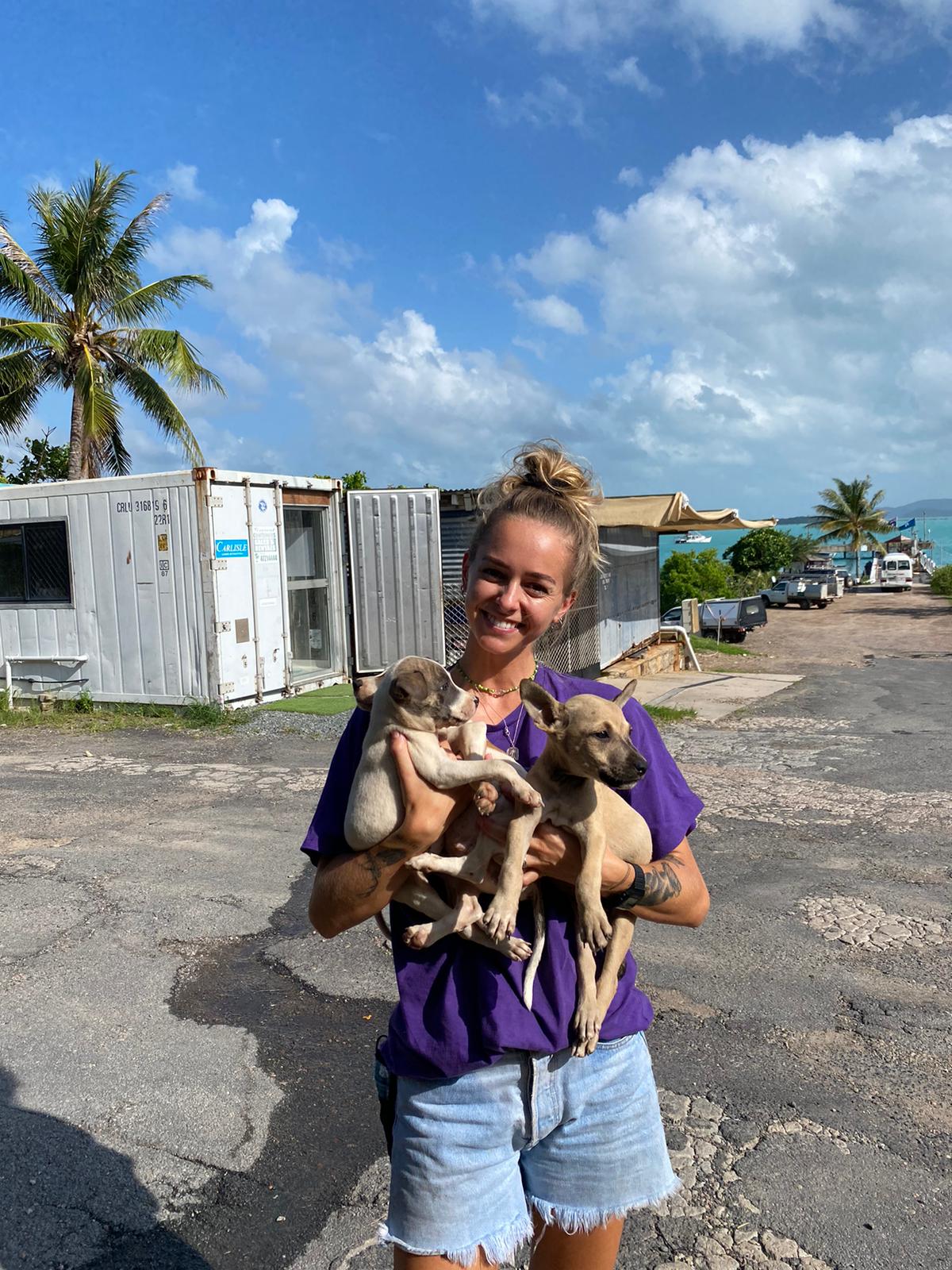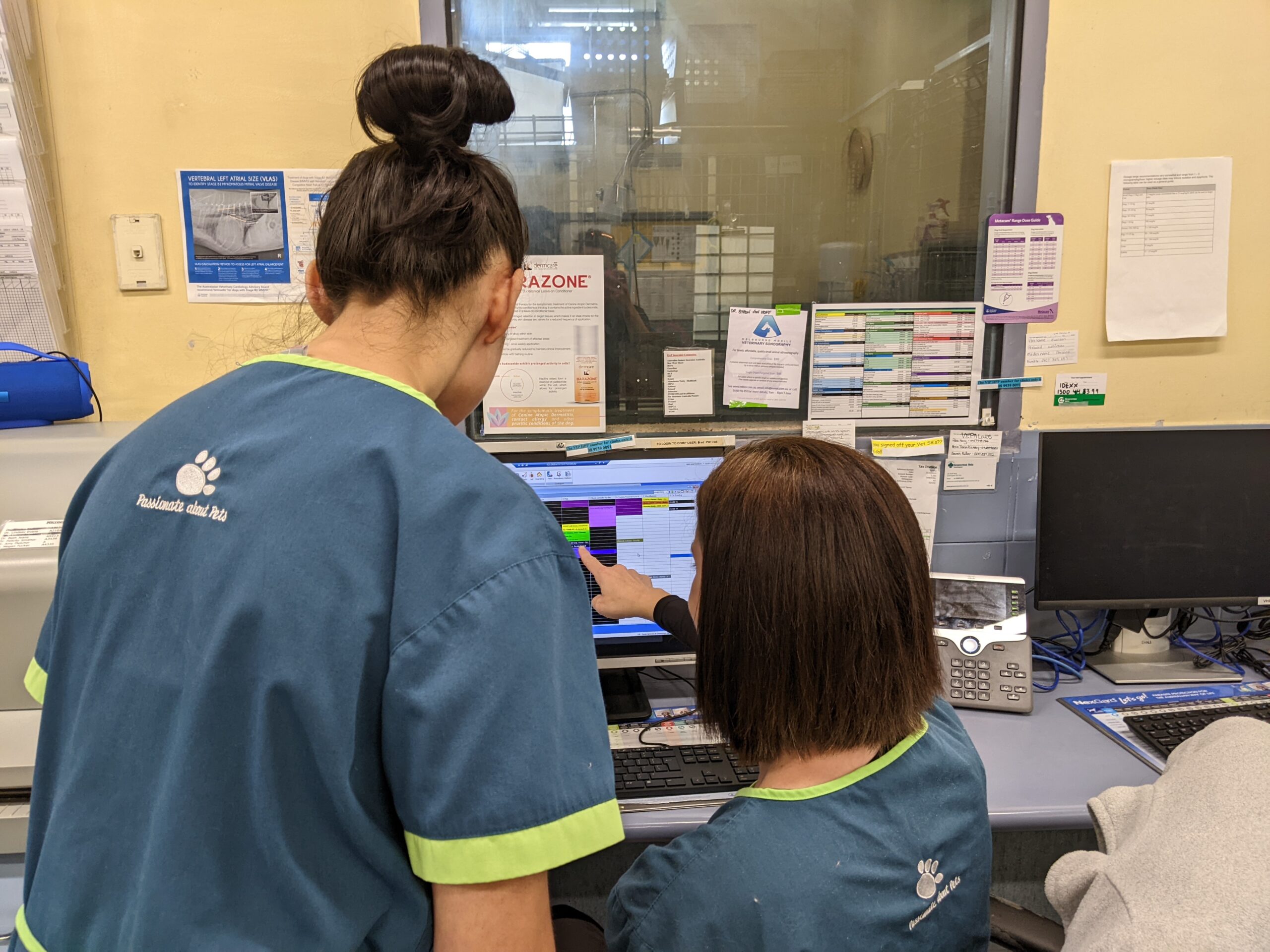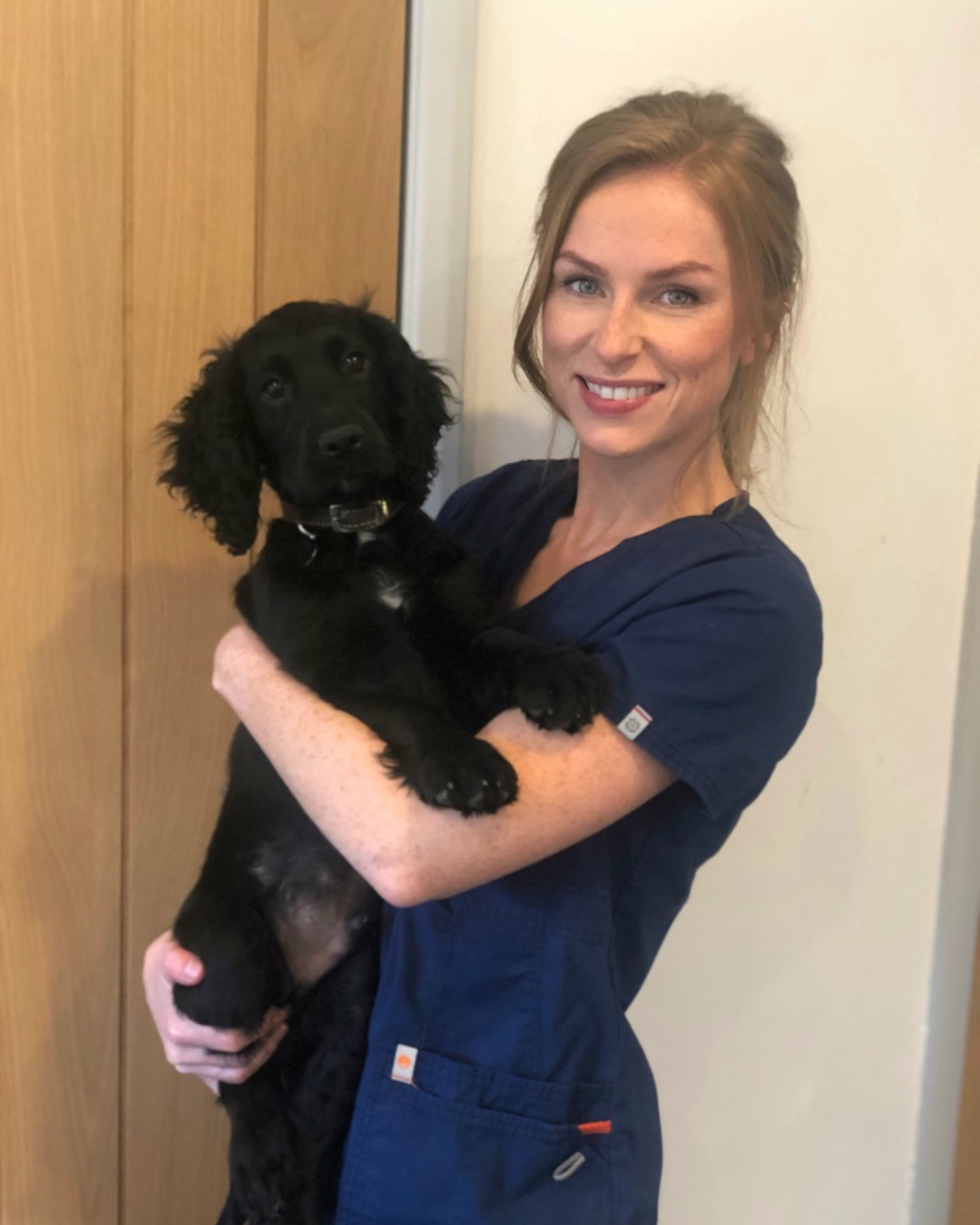Social media often gets a bad rap. Perhaps rightly so. It’s a sort of wild west where anyone can air their views, harmful content can spread like the plague and as well, we are constantly being presented and distracted with unrealistic, and sometimes highly curated and enviable, but unrepresentative, depictions of other people’s lives.
When it comes to shaping what modern pet owners expect and desire from owning an animal, social media certainly must shoulder some blame for some harmful trends. But it’s here to stay and I believe strongly that whilst it has its issues, social media can also serve as a powerful force for good.
A Growing Problem
It was the start of 2021 when I first entered the online world with my vet hat on. I had just turned thirty, six years post-graduation from vet school, and was growing a little disillusioned with some aspects of clinical work in small animal practices. In particular, I was growing more and more demoralised that I was seeing so many French Bulldogs needing corrective surgery to help them breathe, or paralysed by slipped discs. Cavaliers in heart failure, pugs with horrendous eye ulcers… the list just goes on.
It all seemed so predictable and desperately sad. When these sick patients were picked up as puppies, were their doting new owners aware of how high the risk of developing these issues later in their lives might be for their new furry friends? And if they had known, would they have asked more questions of the breeder – and might they have chosen the same breed again?
The Influence of TikTok
I had a passion for writing and got chatting with a school friend of my wife’s who worked as a literary agent. They suggested that to have a chance of getting anything published in future, it was important to have a platform to be pushed off, as it were. Perhaps it might be fun if I started making TikTok videos to raise some awareness about the issues I was passionate about, and I could build my own platform that way.
I had scarcely heard of TikTok at that point. I thought it was a music app where young people filmed themselves trying out dance crazes in their front rooms. How awkward – I certainly didn’t have the flair to pull that off.
But the more I used the app, I came across professionals in other spheres making educational content that was both entertaining and engaging. I came across dentists on a mission to stop people travelling to Turkey to have their teeth brutally shaved down to be fitted with cosmetic veneers. Doctors giving important advice to women on which areas of their breasts they shouldn’t miss out on when checking for lumps on themselves. Lawyers, paediatricians, primary school teachers, and farmers – all sharing insights into their professions and spreading the word on topics they are passionate about.
I soon discovered a network of veterinary professionals spanning the globe creating valuable content aimed at pet owners.
So how exactly can, and are vets using social media to better animal welfare awareness?
Advice for Purr-ents
- Perhaps most intuitively, by providing tips and general advice for pet owners. Social media holds the potential to provide education in an accessible, engaging, short-form way.
- For example, advising pet owners why they should neuter their pets, educating them about common diseases etc. This is especially targeting younger generations who are realistically more likely to keep up with topical issues via social media (rightly or wrongly), than by reading the Sunday Times.
Misinformation and Pseudoscience
- Online platforms are rife with unscientific and harmful advice in many areas (nutrition is a BIG one). Pet owners may accept what they see as truth, especially if coming from creators with huge followings of hundreds of thousands or even millions of people.
- For example, there are quite disturbing videos on TikTok demonstrating chiropractic adjustments on animals without a scientific basis, where the animal appears to be in discomfort.
- Veterinary professionals active in this space have an important opportunity to share out expertise and call out content that is inaccurate or harmful, which may otherwise be left unchallenged.
Animal Welfare Awareness
- Social media is certainly in part to blame for the popularisation of brachycephalic (flat-faced) dog breeds, which are well-documented to suffer significant morbidity as a consequence of how they look.
- The right tone can be difficult to strike, however, there is great potential to educate on health issues suffered by these breeds and call out problematic content that normalises some of their issues.
- For example, ‘cute’ videos of Frenchies falling asleep with objects in their mouths –is well documented to be a method by which they help prevent their airway from obstructing as the tissue in their throat relaxes, saving themselves from disordered sleep. Unless this is pointed out, who is to know any better?
Campaigning for Legislative Reform
- The concerning rise in ear cropping in the UK springs to mind. Whilst already illegal in this country, there is hope that a legal loophole by which cropped dogs can currently be imported from abroad will soon be closed by new laws as part of the Kept Animals Bill.
- A number of vets have been actively raising awareness on this issue online, directly calling out celebrities and influencers who help to glamorise this practice by sharing photos of their own ear-cropped dogs on Instagram and encouraging their followers to sign various petitions to lobby the government to move forwards with new laws.
Accurate Real-Life Insights
- The public perception of what work we do is strongly influenced by many specific representations of vets in popular culture (such as James Herriot and the Supervet). It’s valuable for people considering entering our profession (I get lots of messages from potential applicants to vet schools). But we must also remind ourselves that the most seemingly mundane aspects of our day-to-day work, can be fascinating to those outside of the vet world!
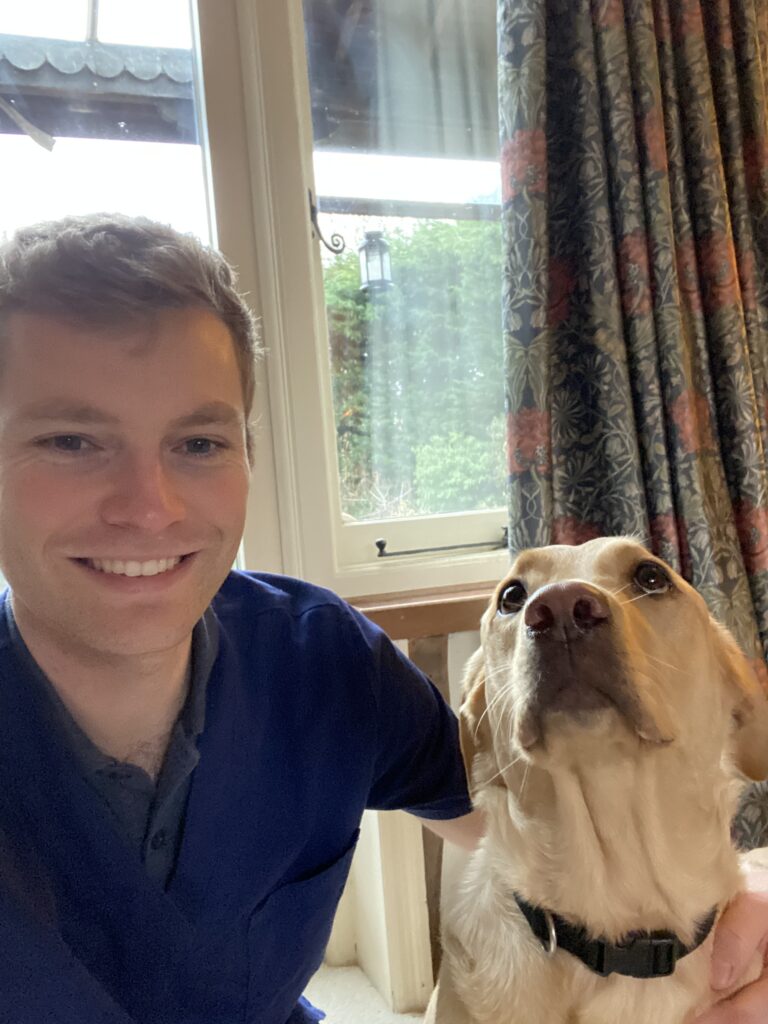
Using our voices for good
Via social media, we can be in the palm of the hand of a global audience. There is massive potential to educate and help shape the minds of younger audiences who are still formulating their own ideas of what pet ownership looks like to them.
Social media can be part of the problem regarding animal welfare issues, but it can also help to provide a solution. This relies on us as individuals (and organisations) showing up in the online space to provide our voice.
It can be a scary leap to take at first, and it’s not for everyone, but overall I personally have found the process to be extremely rewarding.
Written by Ben Simpson-Vernon


